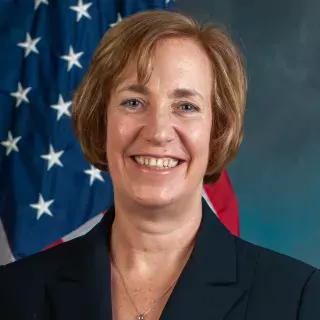Telehealth in the Pandemic—How Has It Changed Health Care Delivery in Medicaid and Medicare?
To prevent the spread of COVID-19 early in the pandemic, millions of doctors’ visits and health care check-ups were postponed or even canceled. In many other cases, these typically in-person visits were conducted instead by phone or video conference.
The use of these telehealth appointments boomed during the pandemic. However, there are concerns about the quality of care patients receive and whether telehealth services are accessible to everyone.
Today’s WatchBlog post looks at how telehealth use has grown within Medicaid and Medicare—the government’s health insurance programs. Together, these programs enroll about half of the U.S. population. Medicaid enrolls about 76 million low-income Americans; Medicare provides coverage for about 64 million older Americans and those with certain disabilities. Collectively, these two federal programs serve individuals of every health status and age.
Image

How has telehealth use changed?
Even before the pandemic, Medicaid beneficiaries had the flexibility to use telehealth services in most states. But Medicare beneficiaries did not. By law, Medicare only paid for telehealth services under limited circumstances—for example, when access to in-person care is limited by location. But during COVID-19, the Department of Health and Human Services (HHS), which oversees Medicare, waived some of its restrictions. Despite these differences in pre-COVID access, we found dramatic increases in telehealth use under both programs.
For example, in March, we reported on changes in telehealth use among Medicaid beneficiaries living in five select states. We found that the number of telehealth services in those states increased dramatically—15x the pre-pandemic level (from 2.1 million the year prior to 32.5 million in the 12 months from March 2020 to February 2021). Learn more about this increase by listening to our podcast with GAO’s Medicaid expert, Carolyn Yocom.
For Medicare, on Monday, we issued a new report, which found that telehealth use under Medicare increased tenfold from about 5 million services (in April-December 2019) to more than 53 million services during the same months in 2020. Spending on telehealth services also boomed—increasing from about $306 million to about $3.7 billion during those time periods. Learn more about this increase by listening to our podcast with GAO’s Medicare expert, Leslie Gordon.
How equitable is access to care?
Increased telehealth use also raises questions about access. For example, the technology used for video health appointments might not be accessible to everyone. From our prior reporting, we know that millions of Americans still lack access to high-speed internet (broadband). And, not everyone has the same level of tech savviness.
Also, some health care providers, particularly those in smaller practices, may lack the technology needed to conduct a private and secure video visit. Patients may not be aware of privacy and security concerns telehealth technology may pose. We think HHS could do a better job notifying patients of these potential issues.
How quality of care could be impacted by telehealth
Visiting your doctor via video conference or phone can be useful when in-person care is not available. But it has its limits. For example, doctors may not be able to diagnose problems, look at injuries, or conduct physical exams via phone. We also heard that telehealth just might not be a good fit for every patient. For example, we heard concerns about using telehealth to conduct child wellness visits. Specifically, some officials we interviewed said it may be more difficult to hold a child’s attention during a telehealth visit. It may also be more difficult to test a child’s reflexes or detect other symptoms during these important check-ups. For those suffering from injury or disability, it might also be difficult to provide effective physical therapy via a video.
We looked at how the Centers for Medicare and Medicaid Services (CMS) monitors the quality of care provided to ensure that people enrolled in these programs receive the care they need. We found that CMS does not collect, assess, or report information about the quality of telehealth care given by Medicaid providers, and recommended they do so.
In terms of the quality of Medicare telehealth services, CMS identified concerns, including risks of harm to patients and provision of services that were not medically necessary (for example genetic testing). Despite these concerns, we found that CMS has not taken action to assess quality of care, nor does it currently have the information it would need to do so.
As a result of our findings, we recommended that CMS better track and assess how Medicare telehealth services are provided—specifically the number of services provided through audio-only (phone).
The impacts of these potential access issues could further limit the usefulness of telehealth. To learn more about our work on telehealth use in Medicaid and Medicare, check out our new reports.
- Comments on GAO’s WatchBlog? Contact blog@gao.gov.
GAO Contacts
Related Products

GAO's mission is to provide Congress with fact-based, nonpartisan information that can help improve federal government performance and ensure accountability for the benefit of the American people. GAO launched its WatchBlog in January, 2014, as part of its continuing effort to reach its audiences—Congress and the American people—where they are currently looking for information.
The blog format allows GAO to provide a little more context about its work than it can offer on its other social media platforms. Posts will tie GAO work to current events and the news; show how GAO’s work is affecting agencies or legislation; highlight reports, testimonies, and issue areas where GAO does work; and provide information about GAO itself, among other things.
Please send any feedback on GAO's WatchBlog to blog@gao.gov.





